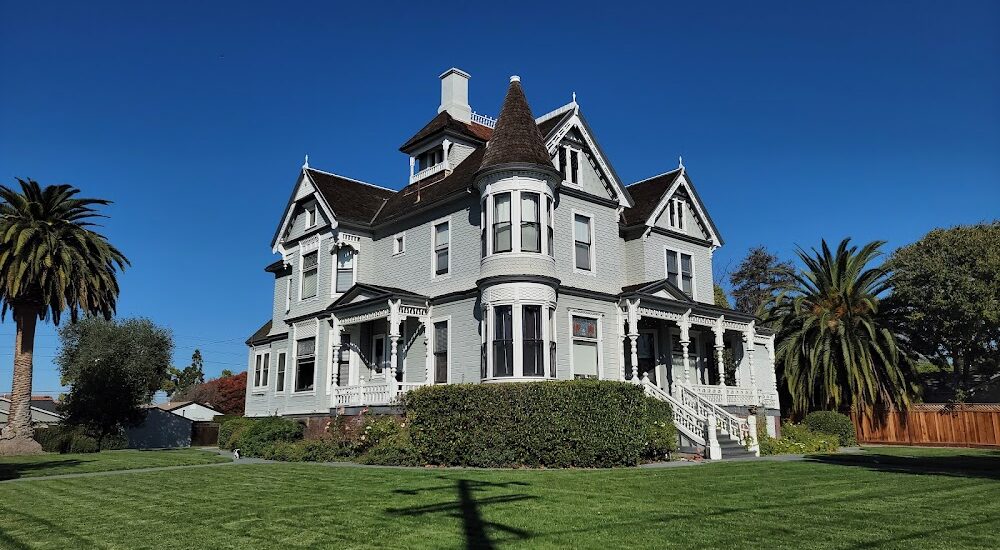Welcome to the Charles Copeland Morse Residence, a remarkable piece of Santa Clara’s history and an emblem of the city’s architectural journey. Known as the Morse Mansion, this stunning Queen Anne Victorian home stands as a testament to the legacy of Charles Copeland Morse, the ‘Seed King’ of America. Born in 1842, Morse was a key figure in the development of the seed industry, co-founding the Ferry-Morse Seed Company, which would become one of the largest seed companies in the world.
The house itself, built in 1892, is a masterpiece of Victorian design. Its three stories rise magnificently over a raised basement, featuring twin gables, a turret known as a ‘witches’ hat,’ and exquisite stained glass windows. The ornate front porch welcomes visitors with intricate woodwork, while inside, the mansion boasts rich wood moldings and antique chandeliers, including a unique brass fixture that once belonged to the family of Amadeo Giannini, founder of the Bank of America.
In its early years, the Morse Residence was not just a family home but also a social hub where notable figures of the time gathered. Charles Morse’s influence extended beyond horticulture; he was a prominent community leader whose work helped shape Santa Clara’s agricultural landscape.
The house has seen many changes over the years. In 1975, Caroline and Vaughn Nixon purchased and restored the mansion to its original grandeur, preserving its historical essence. Today, it serves as a sorority house for Santa Clara University, continuing its legacy of education and community service.
The city of Santa Clara itself has a rich history, from its roots as a mission town founded by the Spanish in 1777 to its transformation into a tech hub. The Morse House is an integral part of this narrative, standing as a witness to the evolution of a city that has gone from orchards to microchips.
The future of the Morse Residence is now under consideration, with proposals to transform it into a museum dedicated to history and sustainability, ensuring that this historical jewel remains accessible to the public and continues to educate and inspire future generations.






